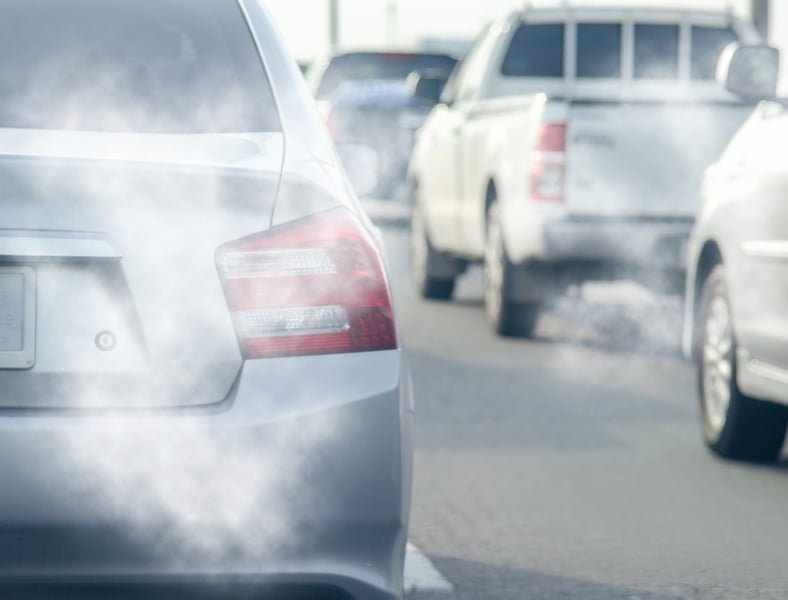Patient Resources
Get Healthy!
Toxins From Grilling, Smoking & Car Exhaust Could Raise Odds for Rheumatoid Arthritis
- May 10, 2023
- Steven Reinberg
- HealthDay Reporter

Toxic chemicals that develop from car exhaust, smoking and backyard grilling might increase your risk of developing the autoimmune disease rheumatoid arthritis, a new study suggests.
These chemicals are called polycyclic aromatic hydrocarbons (PAHs). They form as coal, oil, gas, wood or tobacco burn. Flame grilling of meat and other foods also contribute to PAH formation, the researchers said.
"While more studies are needed, the findings suggest that polyaromatic hydrocarbons may be a significant contributor to rheumatoid arthritis," said lead researcher Chris D'Adamo, director of the Center for Integrative Medicine at the University of Maryland School of Medicine. "People at risk of rheumatoid arthritis should be cautious of polyaromatic hydrocarbons and consider minimizing modifiable sources of exposure."
Blood and urine samples from nearly 22,000 adults revealed those with the highest PAH levels had the highest risk of rheumatoid arthritis.
Rheumatoid arthritis is an autoimmune and inflammatory disease that primarily affects the joints, causing tissue damage and long-lasting pain. Joints may become deformed, and people with the disease may be unsteady on their feet. Women develop rheumatoid arthritis more often than men. The cause isn't known, but is thought to involve genes, sex and age, and environmental factors, such as smoking, nutrition and lifestyle.
D'Adamo said this study can't prove that PAHs cause rheumatoid arthritis, only that there appears to be an association.
"While the findings are suggestive of an important relationship, causality cannot be established in a study like this," D'Adamo said.
He also pointed out that the absolute risk of developing rheumatoid arthritis is relatively low because the prevalence of rheumatoid arthritis is fairly low.
PAHs, however, are rife in the environment. PAH levels are higher in smokers. Other sources include indoor environments, motor vehicle exhaust, natural gas, smoke from wood or coal-burning fires, fumes from asphalt roads, and consumption of grilled or charred foods, the study authors noted.
PAH levels may be higher among the poor because poverty generally goes along with poorer indoor air quality. Also, many poor people live in urban areas near major roadways or in high-traffic areas and are at a higher risk of exposure. Poorer people are also more likely to smoke, researchers have found.
Smoking is a known risk factor for rheumatoid arthritis, and PAH level accounted for about 90% of the association between smoking and rheumatoid arthritis, according to the report.
D'Adamo advises limiting exposure to PAHs, if you can. Avoid cigarette smoke, including second- and third-hand smoke, and don't eat burned foods, he said.
Marinating food going on the grill with spices and herbs reduces the formation of PAHs and other harmful toxicants, he noted.
"Also, minimize using a wood-burning fireplace and make sure to clean the chimney if burning fires, and limit exposure to areas with high vehicle exhaust when possible," D'Adamo added.
For the study, the researchers used data from the 2007 to 2016 U.S. National Health and Nutrition Examination Survey on nearly 22,000 adults. More than 1,400 had rheumatoid arthritis.
Blood and urine samples were assessed to measure the amount of PAH and other chemicals in the body.
The odds of developing rheumatoid arthritis were greatest among the 25% of people with the highest PAH levels, regardless of whether they were former or current smokers.
After taking into account dietary fiber, physical activity, smoking, income, education, age, sex and weight, one PAH -- namely 1-hydroxynaphthalene -- was strongly linked with higher odds (80%) of developing rheumatoid arthritis.
Smoking on its own, however, was not associated with a higher risk for rheumatoid arthritis after accounting for levels of PAH, the researchers noted.
Dr. Diane Horowitz, director of the Rheumatoid Arthritis Center at Northwell Health in Great Neck, N.Y., called the findings "interesting."
"I don't think it's enough to make a causation, but it surely is enough to make an association between these chemicals in rheumatoid arthritis," she said. Further research is needed to establish a cause-and-effect relationship, she noted.
The study also can't say if exposure to these chemicals makes rheumatoid arthritis worse or causes flare-ups, Horowitz said.
Anyone concerned about developing rheumatoid arthritis or people who have the disease might want to avoid exposure to PAHs until more is known about the risk, she added. "There's no harm in trying to avoid these exposures," she said.
"The other thing this article brings up, which I think is very important, is the link with cigarette smoking," Horowitz said. "This is just one more reason not to smoke."
The report was published online May 9 in BMJ Open.
More information
The U.S. Centers of Disease Control and Prevention has more on rheumatoid arthritis.
SOURCES: Chris D'Adamo, PhD, director, Center for Integrative Medicine, University of Maryland School of Medicine, Baltimore; Diane Horowitz, MD, director, Rheumatoid Arthritis Center, Northwell Health, Great Neck, N.Y.; BMJ Open, May 9, 2023, online

